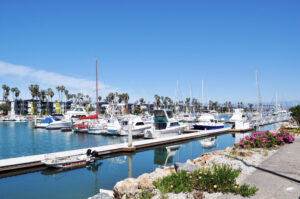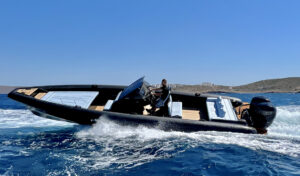Golden Globe Race: Sailors reach equator after testing month
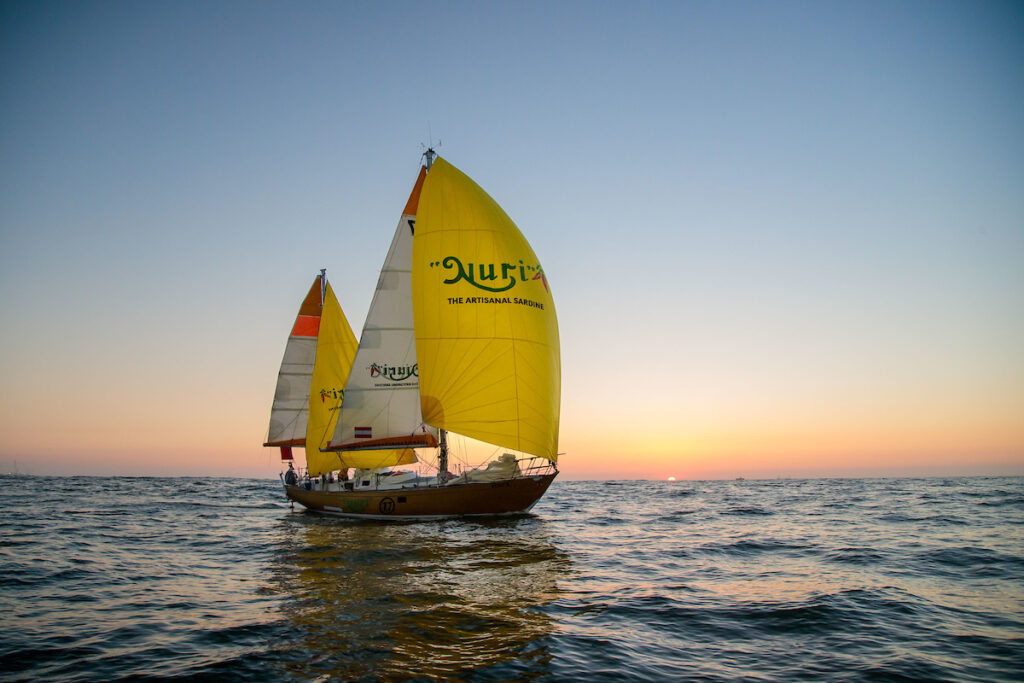
There are 13 sailors still racing in the Golden Globe round-the-world race, after five gruelling weeks at sea.
A total of 16 sailors departed port on 4 September 2022, and are attempting the nine-month, 30,000-mile endeavour — billed as one of the world’s most dangerous and extreme sporting challenges.
Simon Curwen (UK) was the first across the Equator at the end of last week, while others remain stuck in the doldrums — physically and psychologically, seeking tradewinds and a fast passage south.
Starting with a rough exit of the Bay of Biscay, with Damien Guillou’s (FR) PRB returning for repairs and Edward Walentynowicz (CAN) pulling out of his GGR campaign, Guy deBoer (USA) grounded in Fuerteventura, and Mark Sinclair (AUS) mooring his Coconut in Lanzarote for good.
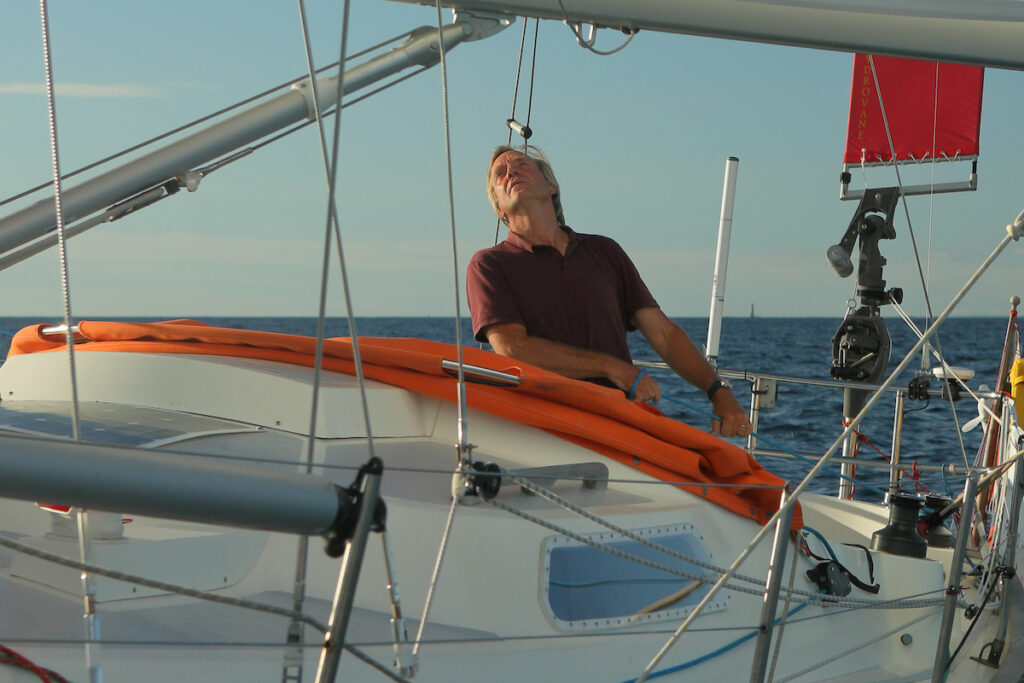
Simon Curwen (UK) took the lead on 9 September and was still ahead when he crossed the equator on 5 October. He was first into the tradewinds, and was travelling at five knots on a direct route towards Trindade Island to his south, the next rounding mark which he should reach soon.
“I’m quite happy to be alone with myself,” says Curwen. “I have music and books to read. Friends gave me tapes, and I took things I listened to when I was 20. Like Led Zeppelin and the Beatles. It’s good to listen to this music again.
“So far, it’s going well. I’m not bored at all. There’s always work to be done. I spend two hours a day on the charts and the sextant, to do the calculations. I also have to look after the sails before heading south. And sometimes you spend an enormous amount of time just looking at things.”
Not all the fleet, however, has been dealing equally well with the lack of wind, lack of communications, lack of information, and prolonged isolation. Entrants can only call Race Control, not family and friends, which the founder and president of the GGR Don McIntyre and the GGR team at Race Control have felt during the scheduled weekly satellite safety calls.
“The GGR skippers are having slightly more contact with the outside world than their 1968 counterparts,” explains McIntyre. “Part of this is safety, like the compulsory daily tweet to race management, but also to help share their experience at sea with the public and GGR followers, like the newly introduced weekly media calls where a news organisation can call them for an exclusive interview.
“The instant communications and gratifications we have in the modern world, makes the isolation of entrants all the more intense, and sometimes painful, which is why we allow the voluntary calls to GGR Race Control.”
However, when the mind is strong, sometimes it’s the body that gives up. Guy Waites (UK), who had an otherwise good week of sailing, faced swelling legs and ankles due to the humidity and lack of walking exercise. Michael Guggenberger (AT) was also looking after his swollen feet, as well as hands and knees, damaged by the humidity and hard work.
Pat Lawless (IE) thinks he broke a rib when he was shoved across the cockpit. He says: “I had an accident, the mainsheet caught me in the shoulder and threw me inside the cockpit, it was four days ago, and I have had a sore rib since. The shoulder must have a torn ligament, but it’s slowly improving.”
South African entrant Jeremy Bagshaw was finding Oleanna sluggish as Frenchman Guillou was catching up. During a calm, he decided to dive on the hull to check the copper coat antifouling only to discover that 70 per cent of his hull was covered with gooseneck barnacles.
Of the discovery, he says: “I checked the hull in Spain arriving from South Africa, and again in Les Sables d’Olonne before the start, and all was fine. Two days after the Lanzarote film drop, I dove in again and had seen nothing. Yesterday, just two weeks later, I was shocked to discover 2cm long barnacles colonising the hull. Fortunately, I’ve been able to get rid of them all.”
This is reminiscent of Tapio Lehtinen’s (FIN) ordeal in 2018/19, who discovered in the Indian Ocean that his Asteria was covered with barnacles. He refused to dive for fear of sharks and was not allowed to scrape his hull in Australian territorial waters. He completed his round-the-world tour in 322 days, being last to finish, and earning the nickname of Captain Barnacles.
Lehtinen has not been slowed by barnacles this time. Not only has he been challenging Kirsten Neuschäfer’s (SA) second place, but he also has the second-best 24-hour distance with 174.19 nautical miles.
So far, only Bagshaw has suffered with barnacles, but other unsuspecting sailors may be impacted. The calms of the doldrums are the last place they can swim and check their hull before venturing in the southern hemisphere trade winds.
A minority, like Curwen, are happy at sea, in good physical condition and sailing fast. This is the case for Kirsten Neuschäfer (SA) who says: “It was difficult to concentrate on preparing for such a big trip while having a lot of public and media interest, as well as attending events. I’ve really enjoyed my solitude, and I’ve had some really adrenaline-fuelled moments, like helming the boat through squalls with the gennaker where it was a really a bit on the edge because we were in a situation where I didn’t have the nerve to leave the tiller, so those were pretty exhilarating moments.”
Neuschäfer, who exited the Bay of Biscay in ninth position, has been consistently posting the best 24-hour distances and holds the fleet record at 174.73 nm per day, allowing her to get back to the second position on 6 October.
She says: “I don’t know where I am in the fleet and actually prefer not knowing where the others are, and just enjoy sailing. I also enjoy not having the GPS and sailing with all the instruments off the boat.”
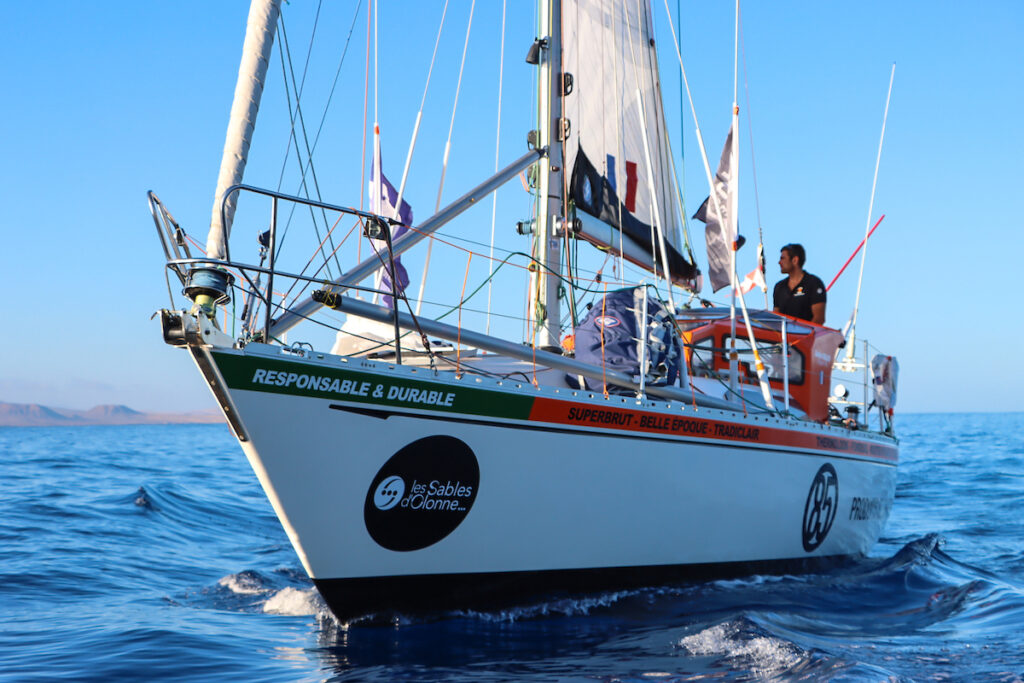
Another sailor working hard to get back at the front is French favourite Guillou, who has been gaining places ever since he left Les Sables d’Olonne with a six-day delay after repairing and reinforcing his windvane. Before reaching the doldrums, he’d gone from last to sixth position, leading the mid-fleet pack.
“With people around me, I’m in a racing mindset. A cruising boat is not relaxing when you work it like a racing boat. We’ve been away for a month,” says Guillou. “There are at least five [six] more to go… The wind will soon change. Even if we don’t have the weather information on board, the St Helena high (a.k.a. South Atlantic high) can generate huge gaps.”
It’s questioned if the speed, talent, hard work and determination of the Finisterian sailor that enabled his comeback will be enough to catch up on the leaders. Michel Desjoyeaux, who won his second victory on the 2008-2009 Vendée Globe, after going back to Les Sables d’Olonne, 200 miles after the start, for repairs and leaving with a 40-hour delay, tweeted: “He is doing a ‘Desjoyeaux’, only better! If you don’t mind me saying it!”


